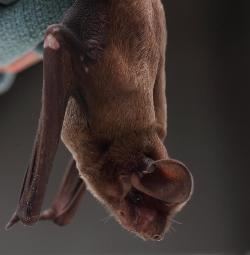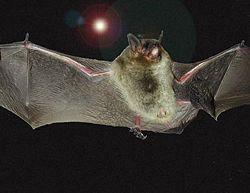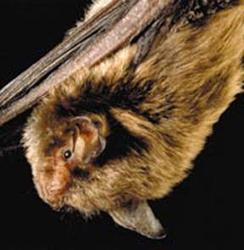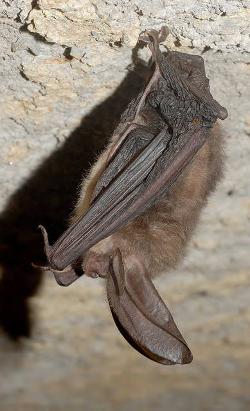Endangered Bats in the United States
The Endangered Species Act (ESA) was signed into law on March 3, 1973. This legislation is designed to prevent the extinction of fish, wildlife, and plants.
The U.S. Fish and Wildlife Service, which is part of the Department of the Interior, and the National Marine Fisheries Service, which is part of the National Oceanic and Atmospheric Administration (NOAA) in the Department of Commerce, share responsibility for administration of the ESA.

The agencies can either voluntarily review the status of a species on their own, or they can receive and review petitions from organizations or from people just like you!
Anyone who knowingly harms a protected species is in violation of the ESA and can result in fines up to $50,000 and imprisonment for up to one year.
Species Status Codes
Each species that is part of the endangered species database is assigned a status code. The two most relevant to this article are listed below, but you can see a full list of codes here.
ENDANGERED = A species "in danger of extinction throughout all or a significant portion of its range."
THREATENED = A species "likely to become endangered within the foreseeable future throughout all or a significant portion of its range."
ENDANGERED Florida Bonneted Bat (Eumops Floridanus)

Quick Facts
- Date Listed as Endangered: 11/01/2013
- Family: Molossidae
- Locations: Southern Florida (map)
- Diet: Beetles, flies, and true bugs
- Habitat: Forest, urban and suburban; artificial and terrestrial structures
- Photos: View
Causes of Decline
- Natural Vulnerability: These bats are highly sensitive because of their naturally small population size, restricted range, few colonies, slow reproduction, and relative isolation. Hurricanes also pose a threat because they can disrupt roosting sites.
- Man-Made Factors: These bats like roosting in buildings/houses and inside hollowed trees that are often disrupted or torn down by humans. Additionally, they also compete with non-native invasive animals such as parrots, black rats, and Africanized honey bees for nesting cavities in trees. Last, the use of pesticides can also diminish the number of insects the bats rely on for food.
How You Can Help
Florida Bonneted Bats love man-made structures and what better structure is there than a bat house. These bats have been documented to use bat houses. In fact, the Zoo Miami owns two large bat houses that are occupied by Florida Bonneted Bats.
If you live in southern Florida it is highly encouraged that you mount a bat house so they can have a safe and permanent dwelling of their own.
You could also donate to organizations trying to help the Bonneted Bat avoid extinction such as the Fish & Wildlife Foundation of Florida.
Further Reading
The Federal Registrar has a very thorough document describing the threats facing the Florida Bonneted bat that we highly encourage you to read.
ENDANGERED Gray bat (Myotis grisescens)

Quick Facts
- Date Listed as Endangered: 04/28/1976
- Family: Vespertilionidae
- Locations: Alabama, Arkansas, Florida, Georgia, Illinois, Indiana, Kansas, Mississippi, North Carolina, Ohio, Oklahoma, South Carolina, West Virginia, Virginia (map)
- Diet: Beetles, flies, and moths
- Habitat: Forests; caves and subterranean structures
- Photos: View
Causes of Decline
- Natural Vulnerability: There are various types of caves including hibernating caves, maternity caves, and bachelor caves. Approximately 95 percent of the entire known population hibernates in only nine caves each winter, with nearly than half in a single cave: Alabama's Fern Cave National Wildlife Refuge. Caves are sometimes prone to natural flooding which disrupt their habitat.
-
Man-Made Factors: Human disturbance and vandalism is the main contributor to the decline of the Gray Bat. Bats lose about 0.01 grams per day during hibernation, but could lose as much as 0.48 grams in the first hour of disturbance. Human disturbances can cause a full loss of fat stores, causing the bats to leave hibernation early in search of food and will ultimately die. Disruption of maternity caves can cause the females to panic and drop their young causing death.
Repeated disturbances can cause the entire bat colony to abandon the cave entirely. With fewer and fewer cave options, this is a significant problem.
How You Can Help
Although the Gray Bat has been on the endangered species list for more than 35 years, the outlook is promising. The population has been slowly rising thanks to cave protection efforts.
The gray bat will not use bat houses, but you can help in other ways by donating to bat organizations like Bat Conservation International.
Additionally, you can bring awareness to about endangered bats and cave protection using social media.
Further Reading
The gray bat recovery plan drafted in 1982. Five year review, 2009
ENDANGERED Indiana bat (Myotis sodalis)

Quick Facts
- Date Listed as Endangered: 03/11/1967
- Family: Vespertilionidae
- Locations: Alabama, Arkansas, Connecticut, Delaware, Florida, Georgia, Illinois, Indiana, Iowa, Kansas, Kentucky, Louisiana, Maine, Maryland, Massachusetts, Michigan, Mississippi, Missouri, Nebraska, New Hampshire, New Jersey, New York, North Carolina, Ohio, Oklahoma, Pennsylvania, Rhode Island, South Carolina, Tennessee, Texas, Vermont, Virginia, West Virginia (map)
- Diet: Mosquitos, moths, and beetles
- Habitat: Forest; caves and subterranean structures during winter hibernation, trees and artificial structures during the summer months
- Photos: View
Causes of Decline
- Natural Vulnerability: Although the Indiana Bat was already listed as endangered almost 40 years prior to the discovery of White-Nose Syndrome, the infectious fungal disease has further contributed to the decline of the Indiana Bat.
- Man-Made Factors: Human disturbance at winter caves causes bats to awaken which depletes their energy reserves. Humans have caused the loss and degradation of summer habitat and roost sites.
How You Can Help
The Indiana bat has been known to use rocket-style bat boxes because it mimics a dead tree. We do not currently sell rocket-style bat boxes.
You can help in other ways by donating to bat organizations like Bat Conservation International.
Further Reading
Conservation Guidance for Indiana Bat (Myotis sodalis)
ENDANGERED Ozark Big-Eared Bat (C.townsendii ingens )

Quick Facts
- Date Listed as Endangered: 11/30/1979
- Family: Vespertilionidae
- Locations: Arkansas, Oklahoma and Missouri (map)
- Diet: Primarily moths
- Habitat: Forests; caves
- Photos: View
Causes of Decline
- Natural Vulnerability: These have a naturally small population size and only reside in a few locations. They do not migrate and live mostly in the same caves year round.
- Man-Made Factors: Human disturbance and vandalism of caves is the main contributor to the decline of the Ozark Big-Eared Bat.
How You Can Help
The Partners for Fish and Wildlife Program is designed to enable homeowners to utilize their land to help with endangered animals in the state of Arkansas.
You can help in other ways by donating to bat organizations like Bat Conservation International.
Further Reading
Feeding Habits of the Endangered Ozark Big-Eared Bat, Ozark Refuge an Oasis for Bats
ENDANGERED Virginia Big-Eared Bat (C.townsendii virginianus)

Quick Facts
- Date Listed as Endangered: 12/31/1979
- Family: Vespertilionidae
- Locations: Virginia, West Virginia and Kentucky (map)
- Diet: Forests; caves and subterranean structures
- Habitat: Forests; caves
- Photos: View
Causes of Decline
- Natural Vulnerability: They live exclusively in limestone caves year round.
- Man-Made Factors: Human disturbance and vandalism of caves is the main contributor to the decline of the Virginia Big-Eared Bat.
How You Can Help
You can help by donating to bat organizations like Bat Conservation International.
Further Reading
Conservation and Management of Eastern Big-eared Bats
ENDANGERED Mexican Long-Nosed Bat (Leptonycteris nivalis)
Quick Facts
- Date Listed as Endangered: 09/30/1988
- Family: Phyllostomidae
- Locations: New Mexico, Texas and Mexico (map)
- Diet: Nectar and pollen from agaves (century plant) and cacti
- Habitat: Desert, Forest, Caves and Subterranean Habitats
- Photos: View
Causes of Decline
- Natural Vulnerability: They have a naturally small population size and require specific plants for their diet.
-
Man-Made Factors: Loss of roosting sites is on factor, but another major factor is the loss of plants the bats feed from.
The agave plant (century plant) takes approximately 10-20 years before it flowers (blooms), after it blooms it dies. The bats primarily live off the agave flower for sustenance, but since it takes so long to bloom, it poses a significant problem. Especially when companies that grow agave for sale, often harvest it before the plant blooms.
How You Can Help
If you live in the region, you could try planting agaves and saguaro or organ pipe cacti for the bats to feed from.
Tequila is made through distillation of juices from agaves. If you're a tequila drinker, you should buy from companies that grow the agave sustainably. The Bat Friendly Tequila and Mezcal™ Project requires brands to allow 5% of the agave plants in their farms to flower as part of their "bat friendly" program.
